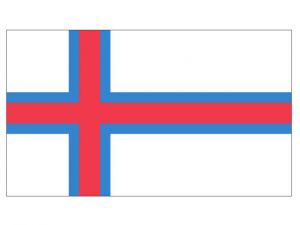Language/Faroese/Grammar/Verb-To-Be
Faroese verbs are an essential part of the language. They allow us to express actions, feelings, and thoughts. One of the most important verbs is the verb to be (vera in Faroese). In this lesson, we will learn how to use the verb to be in different forms and tenses, as well as how to make affirmative, negative, and interrogative sentences.
Personal Pronouns
Before we start, it's important to review the Faroese personal pronouns. Personal pronouns are words that replace nouns and indicate who is involved in the action. Here are the singular and plural forms for subject and object:
| Subject | Object | |
|---|---|---|
| Singular | eg (I) | meg (me) |
| Singular | tú (you) | teg (you) |
| Singular | hann (he) | hann (him) |
| Singular | hon (she) | hana (her) |
| Singular | tað (it) | tað (it) |
| Plural | vit (we) | okkum (us) |
| Plural | tit (you) | tykkum (you) |
| Plural | teir (they) | teimum (them) |
| Plural | tær (they) | teimum (them) |
Note: Faroese has two pronouns for the third person plural: teir for male or mixed groups, and tær for female groups.
Verb To Be
The verb to be is an irregular verb in Faroese. Here is the conjugation of the verb to be in the present tense:
| Singular | Plural | |
|---|---|---|
| 1st person | eg er (I am) | vit eru (we are) |
| 2nd person | tú ert (you are) | tit eru (you are) |
| 3rd person | hann er (he is) | teir eru (they are) (males or mixed groups) |
| 3rd person | hon er (she is) | tær eru (they are) (females) |
| 3rd person | tað er (it is) | tey eru (they are) (neutral) |
Here are some examples of how to use the verb to be in sentences:
- Eg er frægur. (I am famous.)
- Tú ert stuðulig/ur. (You are beautiful/handsome.)
- Hann er ein dugnari studentur. (He is a hard-working student.)
- Hon er ein góð lærari. (She is a good teacher.)
- Tað er ein stór hundur. (It is a big dog.)
- Vit eru ivaleysa. (We are indecisive.)
- Tit eru fegin/ir. (You are happy.)
- Teir eru dugnaligir. (They are hardworking.)
- Tær eru flottar. (They are pretty.)
Note: In Faroese, we don't use the verb to be to indicate possession. Instead, we use the possessive adjectives and pronouns, which we will cover in a later lesson.
Affirmative, Negative, and Interrogative Sentences
Now that we know how to conjugate the verb to be, we can use it to create affirmative, negative, and interrogative sentences.
Affirmative Sentences
Affirmative sentences are used to express a positive statement or fact. In Faroese, we usually start with the subject, followed by the verb to be, and then the complement (adjective or noun). Here are some examples:
- Eg er heima. (I am at home.)
- Tú ert tyngd/ur. (You are heavy.)
- Hann er í fótbóltsfelagnum. (He is in the football club.)
- Hon er konsertverð. (She is concert-worthy.)
- Tað er nógv snjóggur. (It is very fast.)
- Vit eru samfelag. (We are a community.)
- Tit eru frísk. (You are fresh.)
- Teir eru samnýttir. (They are united.)
- Tær eru vakrar. (They are pretty.)
Negative Sentences
Negative sentences are used to express a negative statement or fact. In Faroese, we usually start with the subject, followed by the negative particle ikki, then the verb to be, and then the complement (adjective or noun). Here are some examples:
- Eg er ikki heima. (I am not at home.)
- Tú ert ikki tyngd/ur. (You are not heavy.)
- Hann er ikki í fótbóltsfelagnum. (He is not in the football club.)
- Hon er ikki konsertverð. (She is not concert-worthy.)
- Tað er ikki nógv snjóggur. (It is not very fast.)
- Vit eru ikki samfelag. (We are not a community.)
- Tit eru ikki frísk. (You are not fresh.)
- Teir eru ikki samnýttir. (They are not united.)
- Tær eru ikki vakrar. (They are not pretty.)
Interrogative Sentences
Interrogative sentences are used to ask a question. In Faroese, we usually start with one of the question words (hvat, hvør, hvar, hvenær, hvussu, etc.), follow it with the subject, then the verb to be, and then the complement. Here are some examples:
- Hvat er tað? (What is it?)
- Hvør ert tú? (Who are you?)
- Hvar er skúlin? (Where is the school?)
- Hvenær ert tú fegin/ur? (When are you happy?)
- Hvussu er tað gjørt? (How is it made?)
- Hvat eru vit? (What are we?)
- Hvør eru tit? (Who are you?)
- Hvar eru tey? (Where are they?)
- Hvenær eru tær komin? (When have they arrived?)
Note: In Faroese, we don't need to use a question mark at the end of a question. Instead, we use a question tone to indicate that it's a question. This is one of the characteristics of natural Faroese language.
Conclusion
The verb to be (vera) is an essential verb in Faroese that you need to master to speak the language confidently. In this lesson, we have covered its different forms and conjugations, as well as how to create affirmative, negative, and interrogative sentences. Keep practicing!

